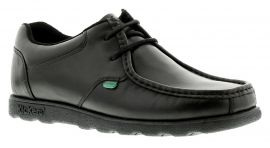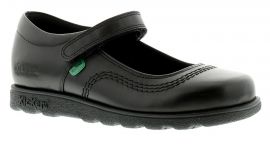How to measure kids’ feet at home
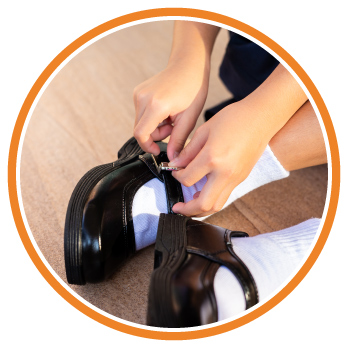
We understand the struggle of accurately measuring your child’s feet. Complicated methods and shoe size conversion charts mixed with energetic youngsters can make measuring a challenging task. Guesstimating sizes is a total no-go for tiny toes – plus, you want to make sure you’re spending your hard-earned pennies on the most comfortable shoes for your little one!
Worry no more, as we’ve created this handy guide on how to measure kids’ feet at home by using our printable foot measure chart that makes the process easy-peasy.
MEASURING A CHILD’S SHOE SIZE
WITH A PRINTABLE FOOT MEASURE CHART
The method we recommend for measuring kids’ feet at home is with our simple print-out chart. Use this to measure each foot before referencing the correct UK shoe size to find the perfect fit. Find easy-to-follow instructions below.
STEP 1: DOWNLOAD & PRINT OUR KIDS’ FOOT MEASURE
Download our free, printable children’s foot measure for UK sizing to get started – you’ll just have to get them to stay in one place long enough!
Double-check the scale of the print-out before you’re good to go – it needs to be set to 100% on A4 paper for the most accurate at-home measuring. Compare the cm guide down the side of the foot measure with a ruler to make sure they match.
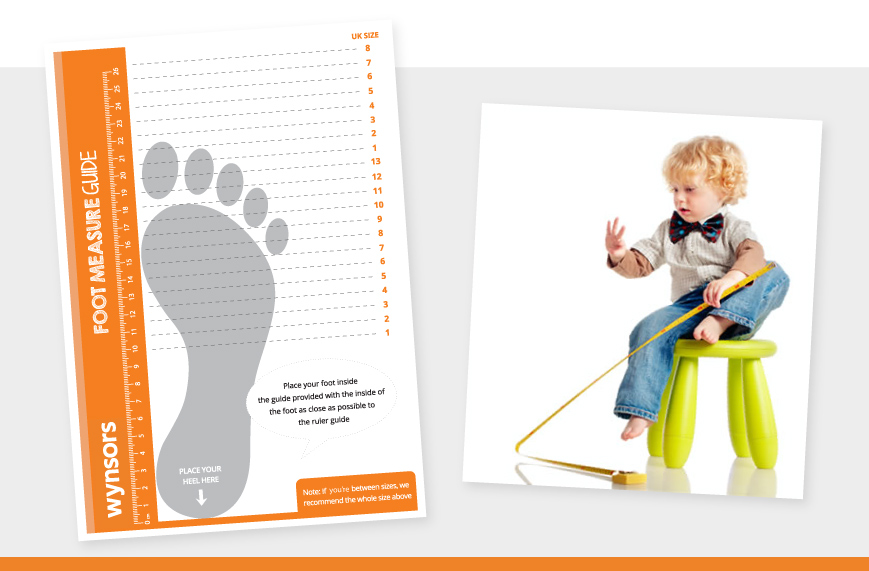
STEP 2: MEASURE YOUR CHILD’S RIGHT FOOT
Before you start, ensure the foot measurement chart is on a flat surface and that your child is wearing the type of socks they would normally wear for the footwear you wish to buy. Place your child’s right foot onto the paper, ensuring their heel is correctly positioned against the marked line and their inner foot is closely aligned to the ruler guide.
Follow the dotted line across from the ruler to the UK size list for an approximate measurement based on the length in cm of your child’s feet. If they’re between sizes, we’d recommend the whole size above.
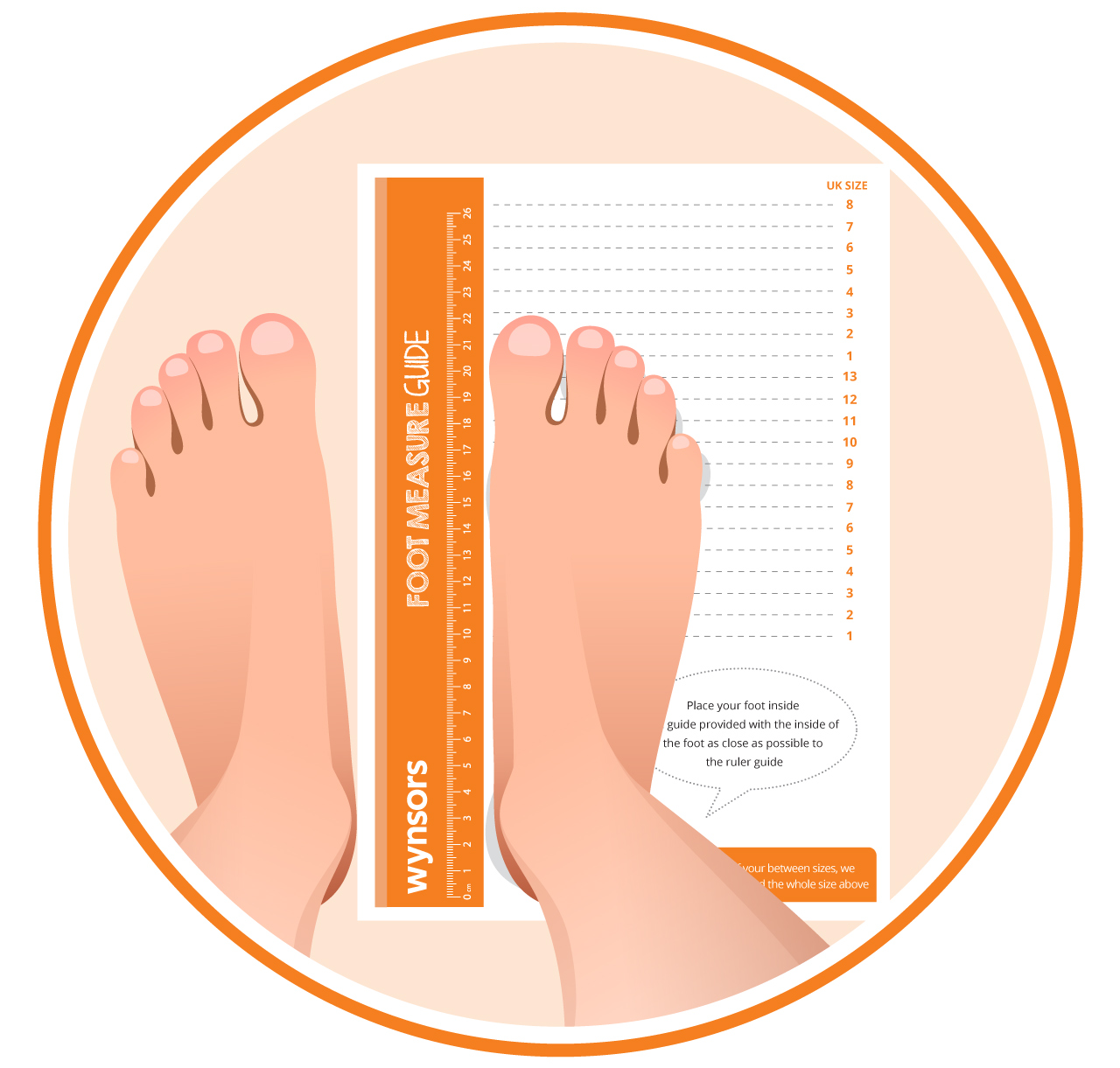
STEP 3: MEASURE YOUR CHILD’S LEFT FOOT
For the left foot, place the heel in the same position, this time with the outer edge of the foot alongside the ruler. Follow the line where the big toe hits to the right-hand side to find the size.
If one foot is slightly bigger than the other (this is completely normal), take the biggest measurement of the two.
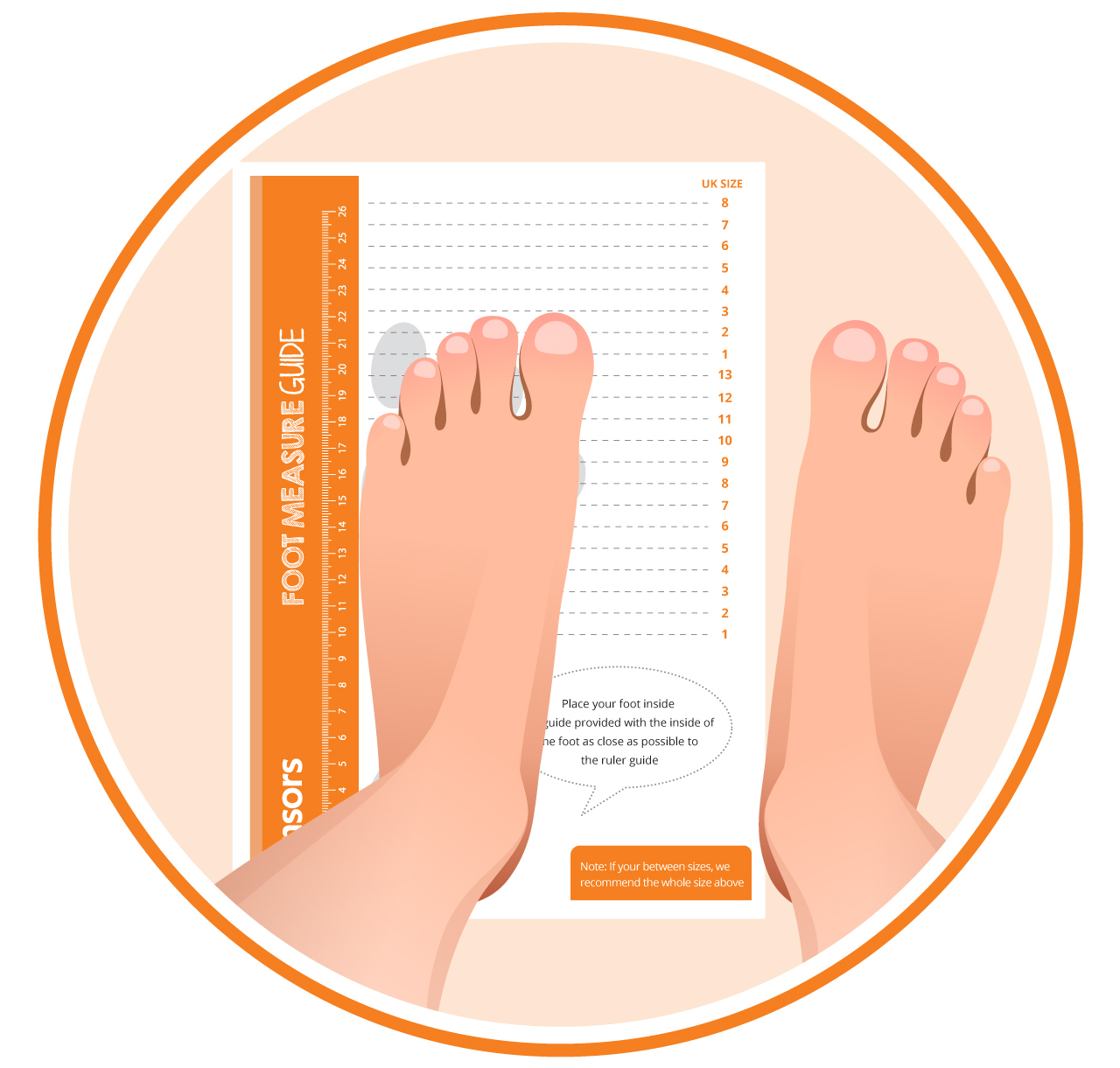
STEP 4: START SHOPPING!
Now you’ve done all the hard work, you can start shopping online. Browse our affordable collections of kids’ shoes here, full of on-trend designs they won’t want to take off!
Kids’ foot measurement in-store
Remember, this shoe size template is designed to give you an indication of your child’s correct foot size only. Some manufacturers’ sizes do differ and it’s also worth noting that the feet swell during the day, so your child’s feet may be bigger in the evening than in the morning.
For a failsafe measurement, getting your child’s feet sized up in-store is your best bet. Our trained shoe fitters can be found in all our stores and are always happy to help! Find your nearest store, here.
Frequently asked questions about kids’ shoe sizing
How can you check if your child’s shoes fit correctly?
First, make sure your child is wearing their shoes fastened properly, and that they’re wearing the right kind of socks. Keep in mind that sizes may vary slightly between brands, but your child will soon tell you if a pair isn’t comfortable. Follow these five steps to check their footwear fits their feet correctly:
- Length: check there’s enough growing room by pressing your thumb firmly down on the front of your child’s shoe and feeling for their longest one (a toe wiggle will help!). We’d recommend a thumb’s width of space (about 14mm) between the end of the shoe and the longest toe.
- Width: using a finger and thumb, feel along the side of each shoe to check the width. Your child should be able to move their little toe, and there shouldn’t be any tight areas or pinching.
- Depth: gently press the top of the shoe down to make sure there’s enough room between the top of your child’s foot and the shoe’s upper – it shouldn’t be resting on the ankle bone (unless the shoe is softly padded), nor should there be any large gaps.
- Heel fit: your child’s shoes should fit snugly around the heel. To test this, pull down on the back of the shoe as if you’re trying to pull it off. It should stay put with minimal movement – you don’t want their shoes flipping off when they walk!
- Final feel-good factor: lastly, make sure their shoes feel good as they walk around. Check for any obvious gaping and ensure both shoes stay on properly.
Why is it so important to get your child’s shoe size right?
Knowing how to measure your child’s shoe size correctly is essential to prevent them developing ailments that will last into adulthood- such as structural deformities (like hammer toes, contracted tendons, fallen arches and clawed toes), as well as painful blisters, corns, bunions and blisters.
Shoes that are too small or the wrong shape can put pressure on the bones and soft tissues of children’s feet, which are still developing until around 16 years of age. So, make sure to get properly fitting footwear for your little ones to keep their feet healthy. Find out more about the importance of accurate foot measurement, here.
What are the best shoes to buy for growing feet?
Children’s shoes should be soft and flexible to allow feet to grow without restriction. It’s best to opt for rounded toe-box shapes, rather than pointed styles, and adjustable fastenings to make sure there’s enough space for comfortable movement of the feet and toes.
When shopping for new kids’ shoes, look out for soft leather or natural materials such as canvas. Shoes made from these fabrics are durable and supportive, but still allow little feet to breathe.
At what age do children need shoes?
One of the most important child development milestones is when those first precious steps are taken. We’d encourage parents of young children to let them learn to walk barefoot or with non-slip socks. Once they’ve got the hang of it and venturing outdoors is on the agenda, it’s time to buy their first pair of shoes – this could be any time between six and 18 months of age.
When is the right time to buy new kids’ shoes?
Kids are constantly growing, which means that youngsters could outgrow shows as often as every eight weeks! The good news is that the pace should slow down as they get older, but in the meantime, you can shop affordable footwear in a range of sizes at Wynsors. Measure their feet regularly for the most accurate shoe fit, though keep in mind that feet usually expand during the day, so it’s best to measure in the afternoon.

